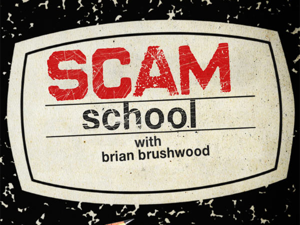 Presh Talwalkar, of the Mind Your Decisions blog, has released a new ebook full of math puzzles!
Presh Talwalkar, of the Mind Your Decisions blog, has released a new ebook full of math puzzles!
It's called What do an Infinite Tower, a Classic Physics Puzzle, and Coin Flipping Have in Common?, also known as the Infinite Tower ebook, for short.
Disclaimer: I was provided with the book by the author without charge for the purposes of review. The thoughts below are purely mine as a result of going over the ebook on my own time for the purpose of informing Grey Matters readers.
Certainly, the first thing that catches your eye is the long and unusual name. The title comes from 3 puzzles in the ebook that share a common basis. Presh Talwalkar presents these puzzles and explains them in his post announcing the ebook release.
That post, in fact, is a good introduction to the style of the book. Generally, each puzzle is introduced on 1-2 pages, and the answers are provided on following pages, so as to give you an opportunity to stop and think about it.
Yes, you could just flip to the answers on the next page right away, but this will rob you of one of the true values of the ebook. Each puzzle offers the thinker what Martin Gardner dubbed an aha! moment, a moment where insight reveals a clarity that simplifies either the problem itself, or the approach of solving the problem. Helping you experience many aha! moments for yourself is the real value.
You might expect such a book to be organized, perhaps by theme, such as, say, coin puzzles vs. sequence problems there, or by puzzle type, such as arithmetic puzzles vs. probability puzzles. Instead, the problems are roughly arranged in order of complexity of solution. In other words, only the simplest insights are needed to solve the first ones, but you need to be wary of mental traps in the latter puzzles.
Some might complain that chapters would be better organized, but even if you forget the location of a puzzle, a search can find it easily enough. With the puzzles being in order of complexity, a simple glance at the page number can give you a sort of rating, as in, "Oh, I've done pretty well with these puzzles, and I'm halfway through the book. That's a good sign!"
Incuded at the end of the ebook is bonus, but it's not a bonus puzzle. It's an article on the friendship paradox that's also available on Presh's blog here. If you're not already familiar with Mind Your Decisions, this is a good introduction to it. As with many posts there, it gets you pondering, and there's more information available online, including at TED.com and phys.org.
All in all, Infinite Tower is an enjoyable way to challenge yourself with math puzzles at your own pace. If you don't have a Kindle or Kindle app, Infinite Tower is also available as a PDF file.
If you enjoy it, you may also want to check out Presh Talwalkar's other book, Math puzzles: classic riddles in counting, geometry, probability, and game theory.


 As many regular Grey Matters readers already know, I'm a big fan of
As many regular Grey Matters readers already know, I'm a big fan of 



 The year's just started, and already I've taken you on a
The year's just started, and already I've taken you on a 


